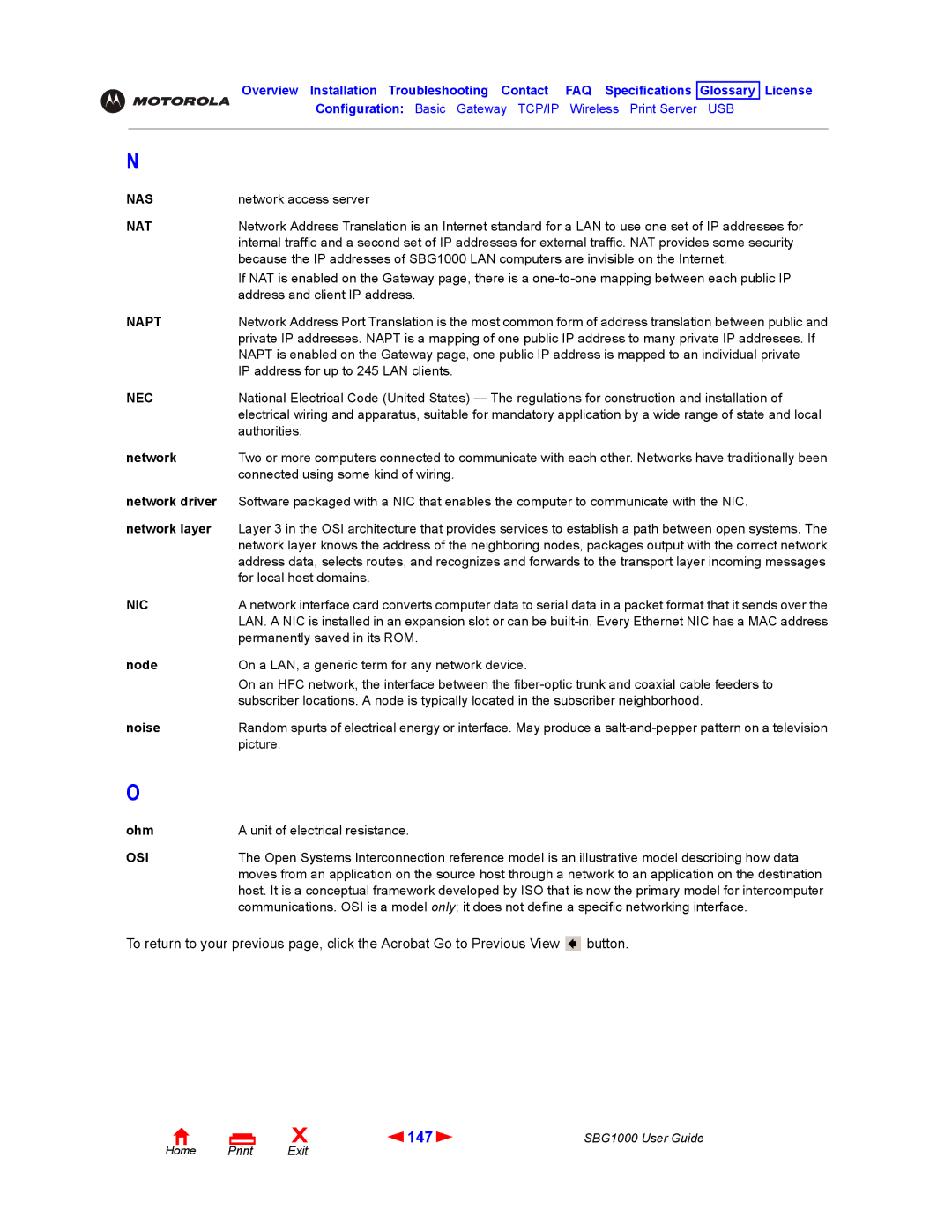
Overview Installation Troubleshooting Contact | FAQ Specifications | Glossary | License |
Configuration: Basic Gateway TCP/IP | Wireless Print Server | USB | |
|
|
|
|
N
NAS | network access server |
NAT | Network Address Translation is an Internet standard for a LAN to use one set of IP addresses for |
| internal traffic and a second set of IP addresses for external traffic. NAT provides some security |
| because the IP addresses of SBG1000 LAN computers are invisible on the Internet. |
| If NAT is enabled on the Gateway page, there is a |
| address and client IP address. |
NAPT | Network Address Port Translation is the most common form of address translation between public and |
| private IP addresses. NAPT is a mapping of one public IP address to many private IP addresses. If |
| NAPT is enabled on the Gateway page, one public IP address is mapped to an individual private |
| IP address for up to 245 LAN clients. |
NEC | National Electrical Code (United States) — The regulations for construction and installation of |
| electrical wiring and apparatus, suitable for mandatory application by a wide range of state and local |
| authorities. |
network | Two or more computers connected to communicate with each other. Networks have traditionally been |
| connected using some kind of wiring. |
network driver | Software packaged with a NIC that enables the computer to communicate with the NIC. |
network layer | Layer 3 in the OSI architecture that provides services to establish a path between open systems. The |
| network layer knows the address of the neighboring nodes, packages output with the correct network |
| address data, selects routes, and recognizes and forwards to the transport layer incoming messages |
| for local host domains. |
NIC | A network interface card converts computer data to serial data in a packet format that it sends over the |
| LAN. A NIC is installed in an expansion slot or can be |
| permanently saved in its ROM. |
node | On a LAN, a generic term for any network device. |
| On an HFC network, the interface between the |
| subscriber locations. A node is typically located in the subscriber neighborhood. |
noise | Random spurts of electrical energy or interface. May produce a |
| picture. |
O
ohm | A unit of electrical resistance. |
|
OSI | The Open Systems Interconnection reference model is an illustrative model describing how data | |
| moves from an application on the source host through a network to an application on the destination | |
| host. It is a conceptual framework developed by ISO that is now the primary model for intercomputer | |
| communications. OSI is a model only; it does not define a specific networking interface. | |
To return to your previous page, click the Acrobat Go to Previous View | button. | |
Home |
X | 147 | SBG1000 User Guide |
Exit |
|
|
